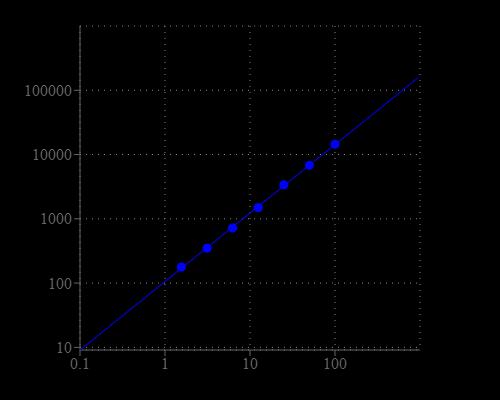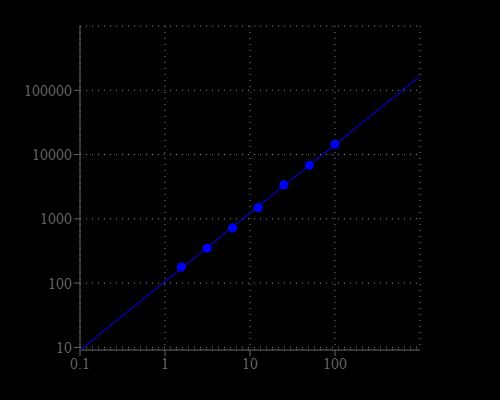Amplite® Fluorimetric L-Alanine Assay Kit
| Price | |
| Catalog Number | |
| Unit Size | |
| Quantity |
| Telephone | 1-800-990-8053 |
| Fax | 1-800-609-2943 |
| sales@aatbio.com | |
| International | See distributors |
| Bulk request | Inquire |
| Custom size | Inquire |
| Shipping | Standard overnight for United States, inquire for international |
| H-phrase | H303, H313, H333 |
| Hazard symbol | XN |
| Intended use | Research Use Only (RUO) |
| R-phrase | R20, R21, R22 |
| UNSPSC | 12352200 |
| Overview |
Platform
Fluorescence microplate reader
| Excitation | 540 nm |
| Emission | 590 nm |
| Cutoff | 570 nm |
| Recommended plate | Solid black |
Components
Example protocol
AT A GLANCE
Protocol summary
- Prepare test samples along with serially diluted L-Alanine standards (50 µL)
- Add equal volume of L-Alanine working solution (50 µL)
- Incubate at 37°C for 30 minutes to 1 hour
- Monitor fluorescence intensity at Ex/Em = 540/590 nm
Important notes
To achieve the best result, it’s strongly recommended to use the black plates. Thaw kit components at room temperature before use.
PREPARATION OF STOCK SOLUTION
1. Quest Fluor™ L-Alanine Sensor stock solution (200X):
Add 55 µL of DMSO (Component E) into Quest Fluor™ L-Alanine Sensor (Component A) to make 200X Quest Fluor™ L-Alanine Sensor stock solution.
2. L-Alanine standard solution (1 mM):
Add 10 µL of 100 mM L-alanine (Component D) into 990 µL PBS (pH 7.0) to get 1 mM L-alanine solution.
PREPARATION OF STANDARD SOLUTION
For convenience, use the Serial Dilution Planner: https://www.aatbio.com/tools/serial-dilution/13825
Add 100 µL of 1 mM L-Alanine standard solution into 900 µL PBS to make 100 µM L-alanine solution (AS7). Perform 1:2 serial dilutions to get serially diluted L-alanine standards (AS6 - AS1).
PREPARATION OF WORKING SOLUTION
1. Add 5 mL Assay Buffer (Component C) into one Enzyme Mix 1 bottle (Component B1) and mix well.
2. Add 100 μL of ddH2O into one Enzyme Mix 2 vial (Component B2) and mix well.
3. Transfer entire vial (100 μL) of Enzyme Mix 2 and 25 uL of 200X L-alanine sensor stock solution into the Enzyme Mix 1 bottle; mix well. Note: The working solution is not stable. Use promptly and avoid direct exposure to light.
SAMPLE EXPERIMENTAL PROTOCOL
Table 1. Layout of L-alanine standards and test samples in a solid black 96-well microplate. AS = L-Alanine standard (AS1 - AS7, 1.5 to 100 µM); BL = blank control; TS = test sample.
| BL | BL | TS | TS |
| AS1 | AS1 | ... | ... |
| AS2 | AS2 | ... | ... |
| AS3 | AS3 | ||
| AS4 | AS4 | ||
| AS5 | AS5 | ||
| AS6 | AS6 | ||
| AS7 | AS7 |
Table 2. Reagent composition for each well.
| Well | Volume | Reagent |
| AS1 - AS7 | 50 µL | Serial Dilution (1.5 to 100 µM) |
| BL | 50 µL | 1X PBS Buffer |
| TS | 50 | Test Sample |
- Prepare L-Alanine standards (AS), blank controls (BL), and test samples (TS) according to the layout provided in Tables 1 and 2. For a 384-well plate, use 25 µL of reagent per well instead of 50 µL.
- Add 50 µL of L-Alanine working solution to each well of L-Alanine standard, blank control, and test samples to make the total L-Alanine assay volume of 100 µL/well. For a 384-well plate, add 25 µL of L-Alanine working solution into each well instead, for a total volume of 50 µL/well. Note: Run the L-alanine assay at pH 6.5 to 7.0.
- Incubate the reaction mixture at 37°C for 30 minutes to 1 hour.
- Monitor the fluorescence increase with a fluorescence plate reader at Ex/Em = 540/590 nm (cut off: 570 nm).
Images
Citations
Authors: Lyu, Fengzhi and Zhang, Tianyu and Yang, Dong and Gui, Meng and Wang, Yongtao and Liao, Xiaojun and Rao, Lei
Journal: bioRxiv (2024): 2024--03
Authors: Skibbe, K and Brethack, AK and S{\"u}nderhauf, A and Ragab, M and Raschdorf, A and Hicken, M and Schlichting, H and Preira, J and Brandt, J and Castven, D and others,
Journal: (2021)
References
Authors: Glover WB, Liberto CM, McNeil WS, Banack SA, Shipley PR, Murch SJ.
Journal: Anal Chem (2012): 7946
Authors: Guidelli EJ, Ramos AP, Zaniquelli ME, Nicolucci P, Baffa O.
Journal: Nanoscale (2012): 2884
Authors: Tang Z, Liu P, Ma C, Yang X, Wang K, Tan W, Lv X.
Journal: Anal Chem (2011): 2505
Authors: Perez MA, Sousa SF, Oliveira EF, Fern and es PA, Ramos MJ.
Journal: J Phys Chem B (2011): 15339
Authors: Su YS, Lin YP, Cheng FC, Jen JF.
Journal: J Agric Food Chem (2010): 120
Authors: Wysocka M, Lesner A, Guzow K, Kulczycka J, Legowska A, Wiczk W, Rolka K.
Journal: Anal Chem (2010): 3883
Authors: Schwimmer JB, Dunn W, Norman GJ, Pardee PE, Middleton MS, Kerkar N, Sirlin CB.
Journal: Gastroenterology (2010): 1357
Authors: Huang FR, Zhang J, Luo YH, Li SP, Zheng SF, Chen XD.
Journal: Guang Pu Xue Yu Guang Pu Fen Xi (2010): 2620
Authors: Song MJ, Yun DH, Hong SI.
Journal: Biosci Biotechnol Biochem (2009): 474
Authors: Glinghammar B, Rafter I, Lindstrom AK, Hedberg JJ, Andersson HB, Lindblom P, Berg AL, Cotgreave I.
Journal: Int J Mol Med (2009): 621
Application notes
Design of potent inhibitors of acetylcholinesterase using morin as the starting compound
Acetylcholinesterase Inhibitory Activity of Pigment Echinochrome A
Induction of Neurite Outgrowth in PC12 Cells
Induction of Neuritogenesis in PC12 Cells by a Pulsed Electromagnetic Field
FAQ
How should I reconstitute an NADPH standard?
Will Amplite® Fluorimetric NAD/NADH Ratio Assay Kit *Red Fluorescence* work with NADP/NADPH? Can this kit measure NADP+ and NADPH?
What is the concentration of calcium inside cells?
What assay kits measure NADP/NADPH from cell samples?

